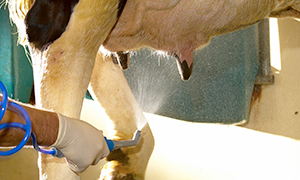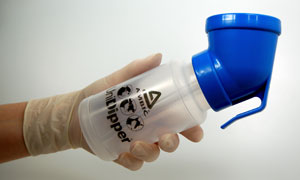Teat Dipping vs Spraying: Is One Method Better Than the Other?
Applying teat disinfectant to the teats immediately after removing the milking unit is an important part of a mastitis control program. The primary purpose of teat disinfection is to reduce the number of bacteria on teats and control the spread of mastitis.
Teat disinfectants can be applied by dipping or spraying. Either method is acceptable if done in a manner that covers the entire area of the teat that had contact with the milking unit.
Teat Spraying
Teat Dipping
The most common failure in the most teat dipping/spraying programs is not adequately covering the teat:
- When using dip cups, often the coverage is only half way up the teat. This can happen if the whole cup is not filled with teat dipper prior to application or overzealousness in avoiding dip wastage.
- When using a spray system, the spray should be applied from below the teat too ensure complete coverage. Spraying from the side results in the far side of the teat not being covered. Spray nozzles should be checked at the beginning of each shift to ensure proper distribution of the spray.
A good way to test for proper teat disinfectant coverage is the “white towel test.” Immediately after the teats have been dipped or sprayed, wrap a clean towel around the base of the teat while blotting the teat dip from the entire teat. open the towel to display the areas of the teat which were covered by teat dip. If the pattern shows incomplete coverage, training should be implemented to show the milkers the proper procedures which will result in the bottom two thirds of the teat completely covered with disinfectant.
It is critical to prevent the teat disinfectant from becoming contaminated:
- For spray system, keep sprayers clean, and do not let sprayers come in contact with the floor.
- If using dip cups, empty and clean cups every time you fill the dip cup reservoir, or if they become contaminated during milking. Never pour used disinfectant back into the original container. Keep containers closed to prevent contamination.
Regardless of the system used, the reservoir of teat disinfectant should be checked before each shift to make sure there is enough for the entire shift or pen.
Consistent and complete application of a teat disinfectant after every milking is a key to good udder health. When applied properly, teat disinfection will reduce bacteria counts in milk, reduce the number of mastitis cases and improve teat skin condition, which makes cows easier to keep clean and milk out.




